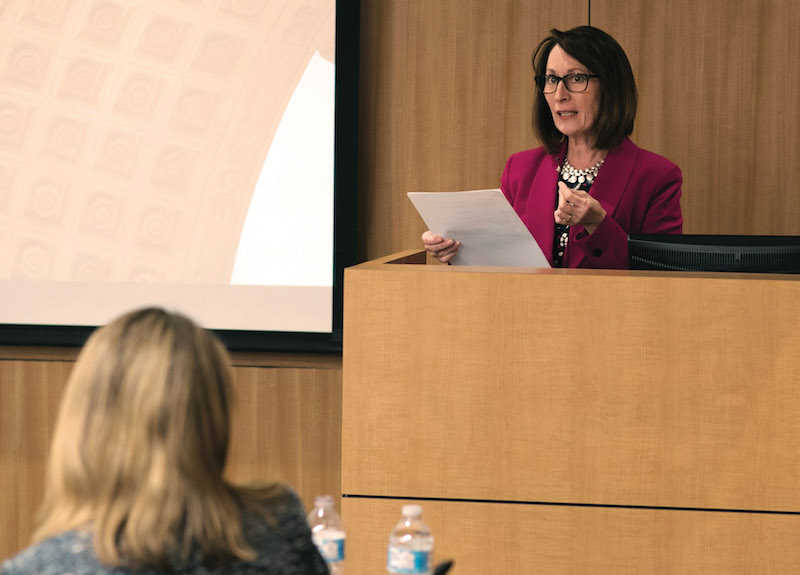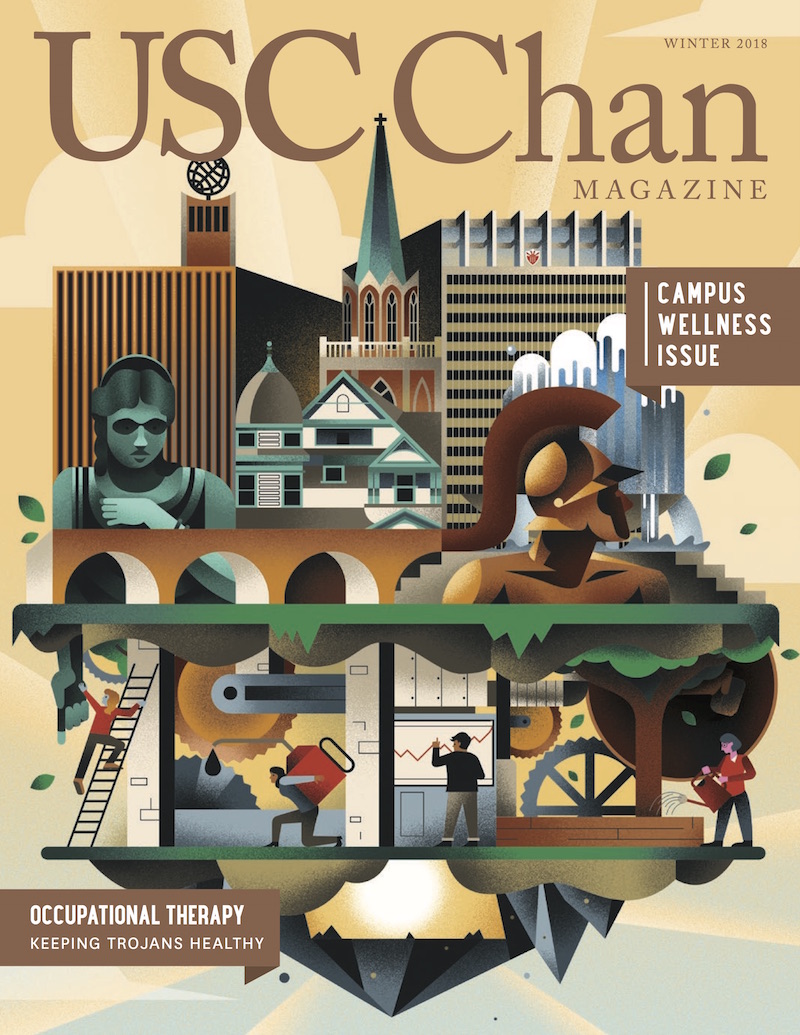First Year Fortunes
NIH award and multi-site symposium cap a prolific year for Grace Baranek
By Mike McNulty ’06, MA ’09, OTD ’10
To say that Associate Dean and Chair Grace Baranek’s first year at the helm of USC Chan has been a busy one would be an understatement.
In less than two full semesters, she has met with the division’s many internal and external stakeholders, finalized the coming year’s budget, presided over her first commencement and white coat ceremonies, traveled to China with the USC Chan China Initiative team and liaised with domestic and international students and guests. She even made it up on the Jumbotron screen at the L.A. Coliseum as a “faculty spotlight” during a Trojans football game.
Yet as busy as Baranek’s first year at USC has been, it has been just as academically productive. One of the profession’s premier experts on the sensory features of children with autism and its impact upon families’ everyday life experiences, Baranek’s scholarly projects and research agenda have not skipped a beat during her transition to Troy.

Associate Dean and Chair Grace Baranek | Photo by Hong Le
Pieces of the Pie
In August, the National Institutes of Health awarded Baranek a new grant in the role of principal investigator, alongside Professor Linda Watson from the University of North Carolina at Chapel Hill’s Division of Speech and Hearing Sciences. Officially titled “Evaluation of a Novel Intervention for Infants at Risk for Neurodevelopmental Disorders,” the two-year R21 award, totaling more than $400,000, is funded by the NIH Eunice Kennedy Shriver National Institute of Child Health and Human Development.
The project will develop and test a new model designed to help parents improve their responsiveness to their infants ages 11-15 months who are at-risk for a later diagnosis of autism spectrum disorder.
In what is known as the “Parents and Infants Engaged” or “PIE” model, a trained coach facilitates parents’ observations and interpretations of their child’s behaviors, specifically reactions to sensory stimuli and pre-linguistic communication, deficits in which are considered typical features of ASD. The coach will also collaborate with parents to explore alternative responses and to reflect upon whether or not different responses helped the infants better engage with their environment and with their parents.
The risk of ASD in infants, without known familial risk, cannot be easily detected through biomarker screening. This study will help clarify whether parent responsiveness to infants’ sensory regulation and social-communicative development is effective at preventing the cascading effects of atypical neurodevelopment on later adaptive outcomes.
“Occupational therapists are key providers of early intervention,” Baranek says, “yet we’re in desperate need of efficacy research, such as PIE, on parent coaching models for sensory regulatory challenges in infants. Our study hopes to change developmental trajectories of infants at risk for a later diagnosis of ASD for more optimal engagement with the world around them.”
Pearls of Wisdom
The PIE study is an outgrowth of Baranek’s nearly 20-year-long relationships with various ASD experts at UNC Chapel Hill, where she was a founding director of the Program for Early Autism Research, Leadership and Service before coming to USC Chan. PEARLS, as it’s otherwise known, is an interdisciplinary project aimed at developing early assessment tools and interventions for ASD. Over the years, the PEARLS team, including Baranek, has produced dozens of publications and conducted NIH-funded research programs.
With Baranek’s arrival at USC Chan in early 2017, PEARLS became both an interdisciplinary project and an intermural one.
In November, USC Chan hosted the first of what is expected to become an annual meeting of PEARLS experts who are researching early identification of, and interventions for, infants at-risk for a future diagnosis of ASD. At the table were faculty members hailing from USC Chan, the USC Division of Biokinesiology and Physical Therapy, the USC Viterbi School of Engineering, UNC Chapel Hill and Vanderbilt University, representing the fields of occupational science and occupational therapy, physical therapy and movement science, engineering and computer science, speech and hearing sciences and psychology.
The invited participants convened at USC Chan to discuss their cutting-edge research, potential collaborations and translational projects. Additional experts even video-conferenced into the symposium from destinations as far away as Europe, and because one goal of PEARLS is student training and mentoring, a dozen graduate students from USC and UNC joined the day’s discussions.
“It was inspiring for someone like myself, who has little research experience, to be surrounded by such successful researchers who have been and currently are performing ground-breaking work in the field of infants at-risk for autism,” Lauren Hastings MA ’17, OTD ’18 says.
⋯






